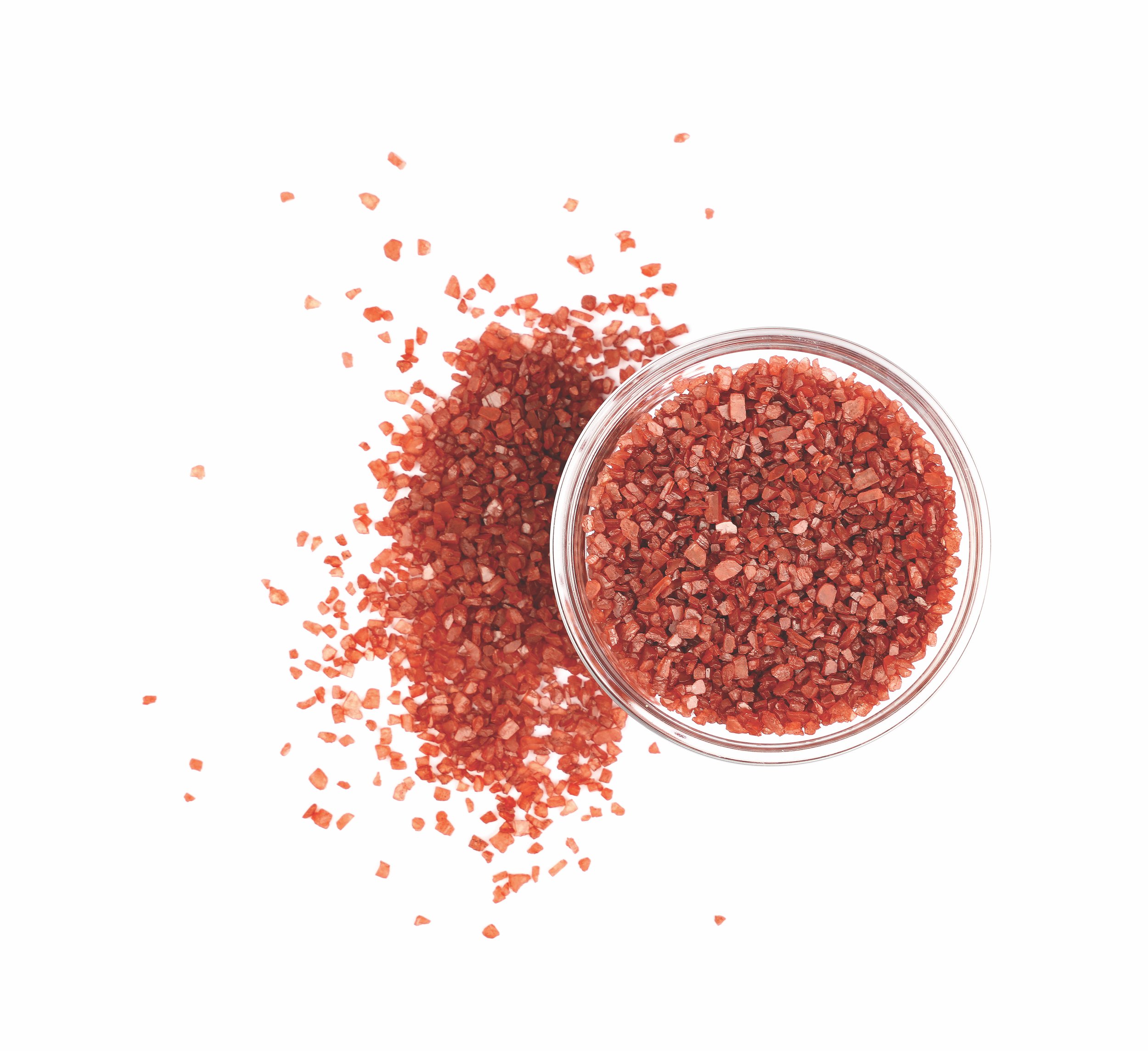Flavor of Life





My wife unceremoniously hurls a barrage of rock salt at me in what she considers a purifying form of sanctification as we return home from a family member’s funeral. Judging by our little ritual, one would never conceive that centuries ago, the oldest and most ubiquitous of seasonings was one of the most valued trade items that built and dismantled empires, but also precipitated wars and revolutions. With no selmeliers (think “sommelier” but for salt) in Hawai‘i, I found myself falling down the rabbit hole discovering salts beyond the typical table, kosher and pickling varieties. Sea salts and rock salts from around the globe span the gamut of colors to include Celtic Grey sea salt tinted with pure clay, Himalayan Pink salt tinged with trace minerals, Red ‘Alaea sea salt hued by volcanic clay, Persian blue salt with sylvinite, and bamboo jade sea salt, which all have distinctive properties as a protein rub if not a finishing seasoning. In Hawai‘i, however, the use of salt extends beyond its flavor-boosting properties in poke, as it continues to be regarded with deep cultural reverence, whereby being gifted Hawaiian sea salt is a privilege that carries significant gravitas.
With production traced as early as neolithic times, salt became recognized not only as a seasoning, but a means of necessary food preservation and there- fore a valued commodity for trade. Viewed as a form of currency by some people and a source of tax revenue for many governments, salt determined the location and respective power of several of the world’s great cities, such as Salzburg, “the city of salt,” and Liverpool, which flourished as a global entrepôt for salt in the 19th century. In China, the world’s leading producer and consumer of salt, governments historically viewed salt as a stable source of state revenue and a driver of technological development.
Outside of commerce, salt was also treasured for its healing and spiritual properties. Hippocrates encouraged people to immerse themselves in salt water to remedy various ailments. In Ayurveda, salt in formulas promoted digestion and decongestion. People flocked to the Dead Sea in Israel hoping to benefit from its curative properties. In religious and spiritual circles, salt was symbolic in rituals and ceremonies, sometimes deemed a potent purifier, warding off evil or clearing negativities while blessing or attracting positive energies.
In the Hawaiian Islands, Native Hawaiians incorporated salt in ceremonies involving ritual blessings and purification, as well as for healing and medicinal purposes. Some continue to practice these time-honored traditions today.
Celebrant Brutus La Benz recalls the late Uncle Eddie Ka‘anana from Milolii who would use the phrase “Ka liu o ka pa‘akai,” which translates to “the essence of salt” in reference to the nature of salt as a purifier, cleanser and preserver. Embracing that mantra, he often practices cleansing ceremonies such as Kapu Kai and Pi Kai ceremonies, that include mixing pa‘akai (solidified seawater, or salt) mixed with ‘olena (turmeric), limu kala (type of seaweed), and fresh water.
Most of the coveted Hawaiian sea salts are gathered by families who made it their kuleana (responsibility) to preserve the method of salt harvesting as chronicled in Hawaiian mythological history. The remnants of evaporated seawater collected from the salt ponds are shared among a privileged few as gifts, never made available for purchase.
Most people — the majority of Hawai‘i locals included — may never be blessed with the endowment of Hanapepe or Mo‘omomi salts. Instead, the average person would have to purchase one of the commercially produced Hawaiian sea salts, such as the pure white deep-sea salt, the red ‘alaea sea salt or the black sea salt made with activated coconut charcoal. Unlike the common varieties found on most supermarket shelves which are not of Hawai‘i in origin, at least these are genuinely “made in Hawai‘i” according to Hawai‘i Revised Statutes which mandates that the salt must have “at least 51% of its wholesale value added by manufacture, assembly, fabrication or production within the state.”
George Joseph, owner and president of Hawaii Kai Corporation, the largest Hawaiian sea salt producer in the world, shares, “There are three places where Hawaiian sea salt is harvested — Moloka‘i, Kaua‘i and Kona, with possibly smaller producers who craft salt in small quantities independently... We source ours from Moloka‘i using a technique from the late Kent Clampitt who sought to craft the purest sea salt in the world.”
On the Big Island of Hawai‘i, Melanie Kelekolio, Operations Manager and chief salt maker at Kona Salt Farm, uses pristine, 900-year-old deep sea water drawn from 2,200 feet below the ocean’s surface to make sea salt, which is rich in natural minerals and flavor. While people commonly purchase these for culinary purposes, they are also used in traditional ways.
Kelekolio reveals, “We offer our salts as a gift to some of the kahu and cultural practitioners who use them in blessings, ceremonies, and la‘au lapa‘au (the act of using native plants, herbs and spir- ituality to treat injuries and ailments). Receiving salt is truly an honor. Salt gifting has a deeper cultural meaning for several reasons. Ocean water has life-giving properties, and when you consider the time and effort it takes to curate the salt — I know because I do it myself — you cherish it more because it is a product from a labor of love.”
